Ever feel like your skin is dried, your throat is scratchy, and you can’t stop sneezing?
The culprit might be lurking in your own home: dry air.
Many of us battle the effects of low indoor humidity, especially when our heating systems work overtime.
Dry air isn’t just uncomfortable; it can seriously impact our health, from irritated sinuses to cracked skin and even increased susceptibility to illness.
But don’t worry – there’s hope for a more comfortable home environment.
In this post, I’ll help you understand how dry air influences your health and share practical solutions.
We’ll explore the science behind indoor humidity, uncover its surprising health effects, and discover effective strategies to create a more balanced, healthier atmosphere in your home.
Get ready to breathe easier and feel more comfortable!
Causes of Dry Air
Dry air in our homes isn’t just a random occurrence.
It results from various factors, both from our environment and the choices we make inside our homes.
1. Environmental Factors

The world outside our windows plays a big role in determining how dry our indoor air becomes.
Let’s look at two main environmental causes.
Seasonal Changes
The changing seasons can dramatically affect the moisture content in the air, impacting our indoor environments.
As the seasons shift, so does the moisture content in the air around us. In winter, the air gets colder and drier.
When we crank up our heaters to stay warm, we make the air inside our homes even drier.
It’s like we’re living in a desert, but indoors! On the flip side, summer can bring its brand of dryness, especially in certain parts of the world.
When it’s scorching hot outside, we tend to blast the air conditioning, which can suck the moisture right out of our indoor air.
Geographic Location
Where you live on the map can significantly influence the humidity levels you experience year-round.
Where you live plays a big role in how dry your air is.
If you live in a place like Arizona or Nevada, you experience dry air all year round.
It’s just part of desert living. But even if you’re not in the desert, you might face dry air challenges.
Inland areas tend to be drier than coastal regions, with more moisture in the air from the nearby water.
And if you live somewhere with big temperature swings between seasons, you might find yourself battling dry air when winter rolls around.
2. Indoor Factors
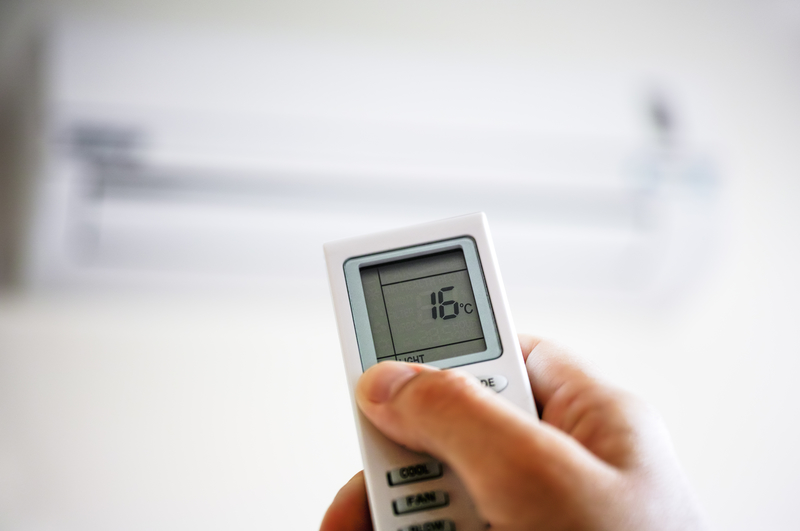
While we can’t control the weather, we have a say in our indoor environment.
However, some of our comfort-seeking behaviors can inadvertently lead to drier air.
Heating Systems
The systems we use to keep warm can be major contributors to dry indoor air.
Our cozy heating systems can be real moisture-zappers.
Central heating warms us up but adds no moisture to the air.
It’s like we’re trading comfort for hydration. Space heaters can be even worse, especially in smaller rooms.
They can turn your bedroom into a mini-Sahara overnight!
And while fireplaces are great for ambiance, they do not favor your indoor humidity.
They heat the air without adding moisture, leaving you feeling warm but parched.
Air Conditioning
Cooling systems, while providing relief from heat, can significantly reduce indoor humidity levels.
Just like heating systems, air conditioners can be humidity thieves.
Whether you’ve got central AC or a window unit, these machines pull moisture out of the air as they cool it.
It’s great for keeping you cool but not for keeping your skin and sinuses happy.
If your ventilation system isn’t up to snuff, it can worsen the dry air problem by not circulating and humidifying the air properly.
Understanding the causes of this dry air is the first step in tackling the problem.
By knowing what’s drying out your air, you can take steps to add moisture back in and create a more comfortable, healthier home environment.
The next section will examine how this dry air affects your health and well-being.
Health Effects of Dry Air
Dry air doesn’t just make us uncomfortable—it can seriously impact our health.
Low humidity can affect our bodies in numerous ways, from our skin to our respiratory system.
Let’s explore these effects in detail.
1. Respiratory Issues
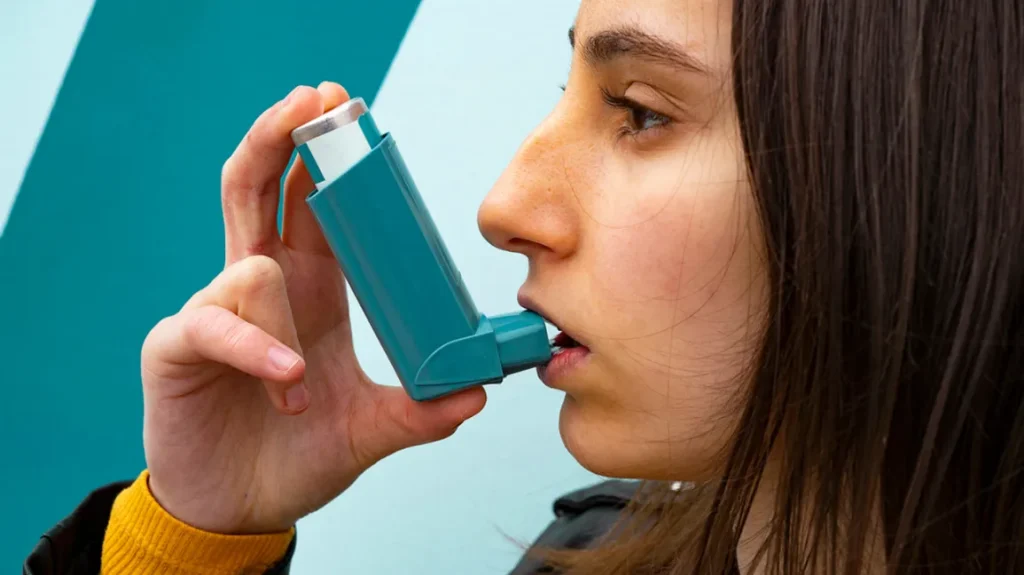
Dry air is particularly vulnerable to our respiratory system.
It can lead to various problems, from minor irritations to exacerbating existing conditions.
Asthma and Bronchitis Exacerbation
Dry air can be a real troublemaker for those with respiratory conditions.
It’s like sandpaper for your airways.
- Explanation: Dry air can irritate bronchial tubes, leading to more frequent and severe asthma attacks.
- Key Study: Research shows that low humidity worsens asthma symptoms by drying out the bronchial tubes.
- Tips: Use humidifiers, avoid exposure to cold, dry air, and maintain a moderate indoor temperature.
Sinusitis and Sore Throats
Our noses and throats can feel like deserts when the air is dry.
This discomfort is not only uncomfortable but can lead to health issues.
- Explanation: Dry air dries out nasal passages and throat, leading to discomfort and inflammation.
- Key Study: A study involving volunteers exposed to dry air reported increased throat irritation.
- Tips: Stay hydrated, use saline nasal sprays, and maintain optimal humidity levels at home.
2. Skin Problems
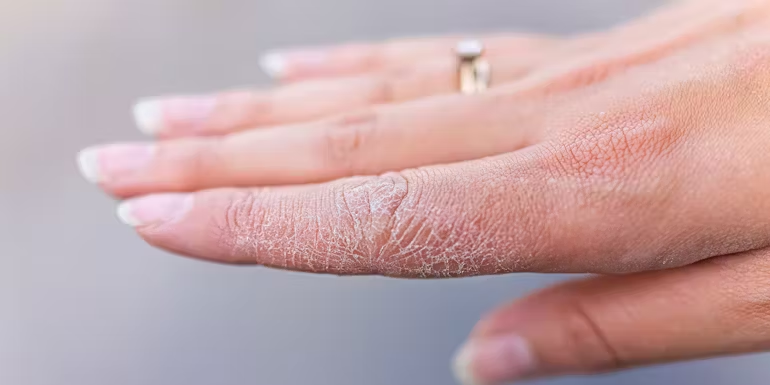
Our skin is our largest organ, often the first to show signs of dry air exposure.
Let’s look at how low humidity affects our skin.
Dry, Itchy, and Flaky Skin
Dry air can turn our skin from silky smooth to rough and irritated.
It’s like our skin is crying out for moisture.
- Explanation: Lack of moisture in the air causes skin to lose hydration, resulting in dryness and itching.
- Key Study: Dermatologists highlight that dry air exacerbates skin conditions, causing discomfort.
- Tips: Use moisturizers frequently, gentle soaps, and avoid long hot showers.
Exacerbation of Eczema and Dermatitis
Dry air can be particularly troublesome for those with existing skin conditions.
It’s like adding fuel to the fire.
- Explanation: Dry air worsens symptoms of eczema and dermatitis by reducing skin moisture and barrier function.
- Key Study: Studies show that eczema patients experience more flare-ups in dry environments.
- Tips: Use thick, oil-based moisturizers, avoid irritants, and humidify air.
3. Eye Irritation

Our eyes are sensitive organs, and dry air can affect them in several ways.
Let’s take a closer look.
Reduced Tear Production
Dry air can leave our eyes feeling gritty and uncomfortable.
It’s like our natural eye lubricant is running low.
- Explanation: Dry air affects the tear film on the eyes, leading to dryness and irritation.
- Key Study: Office workers in air-conditioned environments report increased eye discomfort.
- Tips: Take regular breaks from screens, use artificial tears, and increase indoor humidity.
Increased Susceptibility to Irritants
When our eyes are dry, they become more vulnerable to other irritants.
It’s a double whammy for eye comfort.
- Explanation: Dry patches on the eyes make them more vulnerable to dust and other irritants.
- Key Study: Research indicates that lower humidity increases eye discomfort and irritation.
- Tips: Maintain proper indoor humidity and use air purifiers to reduce irritants.
4. Nosebleeds

Nosebleeds can be alarming, and dry air is often the culprit.
Let’s understand why this happens.
Cracked Nasal Passages
Dry air can turn our nasal passages into cracked, desert-like landscapes, which can lead to unpleasant consequences.
- Explanation: Dry air causes the nasal passages to dry out and crack, leading to nosebleeds.
- Key Study: Studies link lower indoor humidity with a higher incidence of nosebleeds, especially in winter.
- Tips: Use humidifiers, apply petroleum jelly inside the nostrils, and avoid dry environments.
Increased Vulnerability to Infections
When our nasal passages are dry, they can less defend against invaders.
It’s like leaving the castle gate open.
- Explanation: Dry nasal passages are less effective at trapping and fighting off infections.
- Key Study: Medical experts highlight that dry air increases susceptibility to colds and flu.
- Tips: Maintain humidity levels, use nasal sprays, and practice good hygiene.
5. Dehydration

Dry air doesn’t just affect our outsides – it can impact our internal hydration too. Let’s explore how.
Fluid Loss Through Skin and Respiration
Dry air can be like a sponge, soaking up moisture from our bodies. If we’re not careful, this can lead to dehydration.
- Explanation: Dry air accelerates moisture evaporation from the skin and respiratory tract.
- Key Study: Research shows that individuals in dry environments have higher dehydration rates.
- Tips: Drink plenty of water, use hydrating skin products, and monitor indoor humidity.
Concentrated Urine as an Indicator
Our bodies have ways of telling us when we’re dehydrated. One of these is through our urine.
- Explanation: Dehydration caused by dry air results in more concentrated urine.
- Key Study: Studies indicate that workers in low-humidity environments exhibit signs of dehydration.
- Tips: Increase water intake, reduce caffeine consumption, and use humidifiers.
6. Increased Stress Levels

Dry air doesn’t just affect our physical health – it can impact our mental well-being too.
Let’s look at how.
Physical Discomfort
When our body is uncomfortable due to dry air, it can increase stress.
It’s like our body is constantly sending distress signals.
- Explanation: Dry air causes various discomforts, increasing overall stress levels.
- Key Study: Research links low humidity with higher stress responses and heart rate variability.
- Tips: Use relaxation techniques, maintain a comfortable indoor environment, and hydrate regularly.
Poor Sleep Quality
Dry air can interfere with our sleep, leading to increased stress.
It’s a vicious cycle of discomfort and poor rest.
- Explanation: Dry air affects sleep by causing nasal congestion and throat irritation.
- Key Study: Studies show that low-humidity environments negatively impact sleep quality.
- Tips: Use a humidifier in the bedroom, maintain a cool and comfortable sleeping environment, and avoid allergens.
7. Risk of Infections
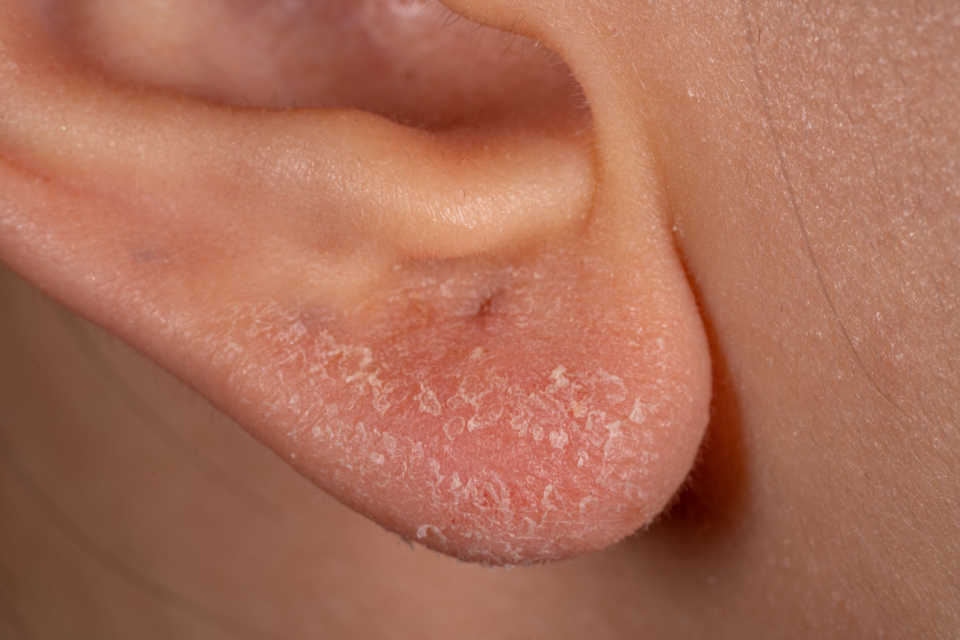
Dry air can make us more susceptible to infections.
Let’s understand why this happens.
Weakened Mucous Membranes
Our mucous membranes are our first line of defense against pathogens. Dry air can compromise this defense.
- Explanation: Dry air thins out the mucous lining, reducing its effectiveness in trapping pathogens.
- Key Study: Medical findings indicate a higher risk of respiratory infections in dry air conditions.
- Tips: Keep indoor air humidified, use saline nasal sprays, and practice good respiratory hygiene.
Prolonged Life of Viruses in Dry Conditions
Dry air doesn’t just affect us – it can also help viruses survive longer. This increases our risk of getting sick.
- Explanation: Viruses survive longer in dry air, increasing the risk of transmission.
- Key Study: Research shows that low humidity prolongs viruses’ life, such as influenza.
- Tips: Maintain optimal humidity, ventilate rooms regularly, and use air purifiers.
Tackling Dry Air
Now that we understand the effects of dry air let’s explore practical solutions to combat this issue.
We can employ various methods to increase humidity and create a more comfortable living environment.
1. Humidification
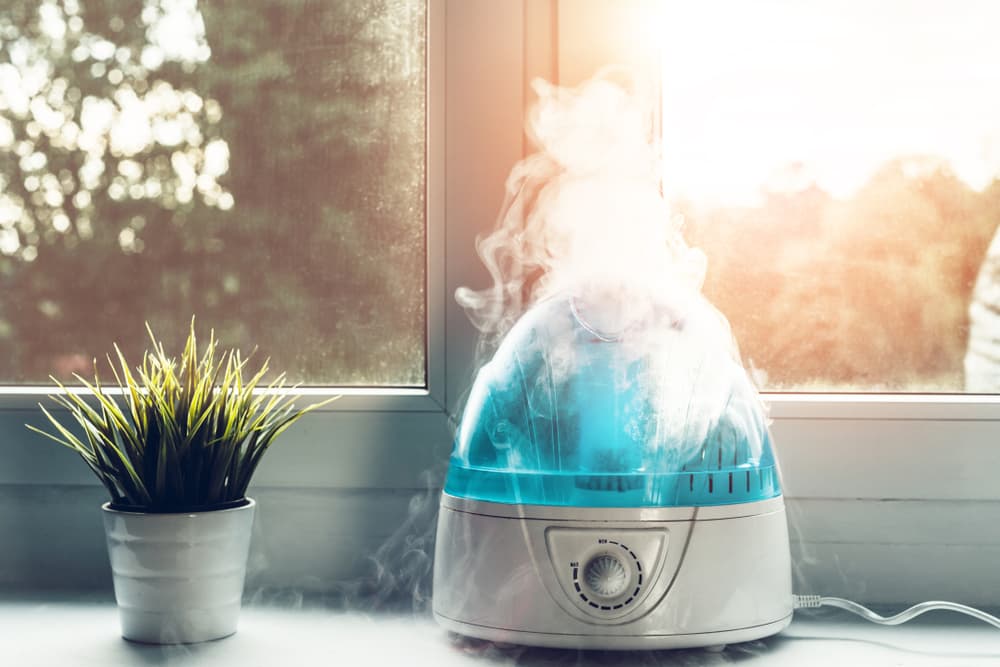
Adding moisture to the air is one of the most effective ways to combat dryness.
Let’s examine how to do this efficiently.
Use of Humidifiers (types and Benefits)
Humidifiers are your first line of defense against dry air.
They come in different types to suit various needs and spaces.
Different types of humidifiers include ultrasonic, evaporative, and steam vaporizers.
Each has its benefits – ultrasonic units are quiet, evaporative, and energy-efficient, and steam vaporizers can help with congestion.
Choose one that fits your space and needs.
Proper Maintenance and Cleaning of Humidifiers
A well-maintained humidifier is key to healthy air.
Regular cleaning prevents the growth of mold and bacteria.
Clean your humidifier at least once a week with vinegar or hydrogen peroxide.
Always use distilled or demineralized water to prevent mineral buildup.
Replace filters as recommended by the manufacturer.
2. Sealing the Home

Preventing moisture loss is just as important as adding humidity.
Here’s how to maintain your moisture.
Insulating doors, windows, and attics
Good insulation doesn’t just keep you warm – it helps maintain proper humidity levels too.
Use Weatherstripping Around Doors and Windows to Prevent Air Leaks.
Insulate your attic to prevent warm, moist air from escaping.
This not only helps with humidity but can also reduce your energy bills.
Preventing leaks to retain indoor humidity
Small leaks can lead to big humidity losses.
It’s important to find and fix these issues.
Regularly inspect your home for cracks or gaps, especially around windows, doors, and basement.
Use caulk or foam sealant to fill any gaps you find.
This will help keep both heat and humidity inside your home.
3. Natural Methods

Nature has its ways of adding moisture to the air.
Let’s harness these natural humidifiers.
Using Houseplants for Transpiration
Plants aren’t just decorative – they’re natural humidifiers, too!
Choose plants known for high transpiration rates, like peace lilies, spider plants, or Boston ferns.
These will moisten the air and purify it and add a touch of nature to your home.
Placing water bowls and vases around the house
Sometimes, the simplest solutions are the most effective.
Place bowls of water near heat sources or in sunny spots.
As the water evaporates, it adds moisture to the air.
You can also add some decorative vases with water for a dual purpose – beauty and humidity.
Cooking and Boiling Water Indoors
Your everyday activities can contribute to better humidity levels.
Leave the lid off when you’re boiling water for pasta or tea.
After baking, leave the oven door open to let the moisture escape into your home.
These small actions can make a big difference in your indoor humidity.
4. Lifestyle Adjustments

Sometimes, tackling dry air means changing our habits.
Here are some simple adjustments you can make.
Shorter, Cooler Showers
While long, hot showers feel great, they can contribute to dry skin and low indoor humidity.
Try to limit showers to 5-10 minutes and use warm, not hot water.
This saves water, helps maintain your skin’s natural oils, and keeps more moisture in the air.
Using Moisturizers and Hydrating Sprays
Topical hydration can help combat the effects of dry air on your skin and nasal passages.
Apply moisturizer to damp skin after showering to lock in hydration.
Use a hydrating facial spray throughout the day to refresh your skin.
Consider using a saline nasal spray to keep your nasal passages moist.
Staying Hydrated by Drinking Water
Hydration from the inside out is crucial in combating the effects of dry air.
Aim to drink at least eight glasses of water a day.
Keep a water bottle with you and sip regularly.
Remember, when you’re well-hydrated, your body is better equipped to deal with dry air.
5. Ventilation and Air Quality

Good air circulation and quality contribute significantly to comfortable humidity levels.
I am regularly ventilating the home.
Fresh air circulation helps maintain a healthy balance of humidity and reduces indoor pollutants.
Open windows for a few minutes each day, even in winter, to let in fresh air.
Use exhaust fans in the kitchen and bathroom to remove excess moisture and prevent mold growth.
Using Air Purifiers and Proper HVAC Maintenance
Clean air is easier to humidify and more comfortable to breathe.
Invest in a good-quality air purifier to remove dust and allergens.
Also, change your HVAC filters regularly and have your system serviced annually.
This ensures efficient operation and helps maintain proper humidity levels.
Implementing these strategies can effectively combat dry air in your home, creating a more comfortable and healthier living environment.
Remember, it’s not about achieving one perfect solution but combining various methods to find the best for your situation.
Preventive Measures
Preventing dry air problems is much easier than dealing with their consequences.
We can ensure our homes stay at optimal humidity levels year-round by implementing simple measures.
Importance of proactive measures in managing dry air
Proactively controlling humidity can save you from health issues and home damage.
It’s like regular car maintenance – a little effort now can prevent big problems later.
From monitoring humidity levels to making seasonal adjustments, there are several strategies we can use to keep our indoor air at the right moisture level.
Let’s dive into these methods.
1. Monitoring Humidity Levels with Hygrometers

Keeping an eye on your indoor humidity is the first step in preventing dry air issues.
Here’s why it’s important and how to do it effectively.
Why Monitor Humidity?
Monitoring humidity is like having a weather station for your home.
It helps you better understand your indoor environment.
- Ensuring optimal indoor air quality: Knowing your humidity levels helps you maintain air that’s comfortable to breathe and kind to your skin and respiratory system.
- Preventing health issues and home damage: By catching low humidity early, you can avoid health problems like dry skin and respiratory irritation and home issues like cracking wood.
Using Hygrometers
A hygrometer is your best friend when it comes to monitoring humidity.
Let’s look at how to use these handy devices.
- How hygrometers work: Hygrometers measure the amount of moisture in the air. They’re like thermometers but for humidity instead of temperature.
- Types of hygrometers (digital, analog): You can choose between digital hygrometers, which give precise readings, or analog ones, which use a dial.
Digital ones are usually more accurate, but analog ones can be more aesthetically pleasing.
Ideal Humidity Levels
Knowing the right humidity level to aim for is crucial.
Here’s what you should target.
- Recommended indoor humidity range (30%-50%): This range is ideal for most homes. It’s high enough to prevent dryness but low enough to discourage mold growth.
- Adjusting for seasonal variations: You might need to adjust your target humidity based on outdoor conditions. In winter, you might aim for the lower end of the range to prevent condensation on cold surfaces.
2. Adjusting Indoor Temperature and Humidity Settings
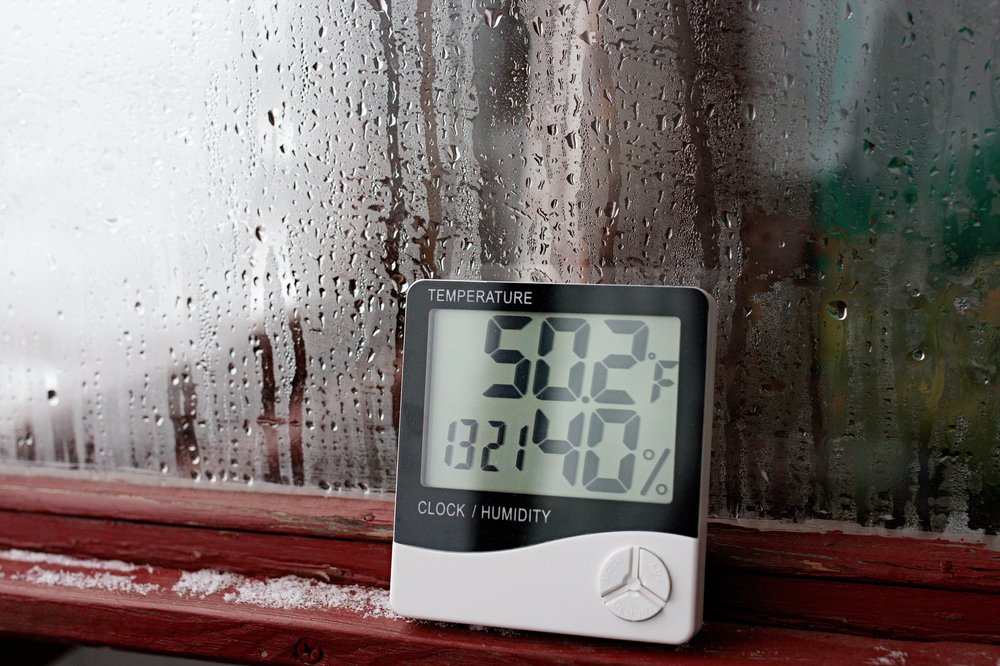
Temperature and humidity go hand in hand.
Let’s explore how to balance these for optimal comfort.
Balancing Temperature and Humidity
Finding the right balance between temperature and humidity is key to a comfortable home.
- Impact of heating and cooling systems on humidity: Heating systems dry out the air, while air conditioning removes moisture. Understanding this helps you adjust accordingly.
- Maintaining a comfortable indoor environment: For optimal comfort, aim for a temperature between 68-72°F (20-22°C) and humidity between 30-50%.
Using Humidifiers and Dehumidifiers
These devices are your main tools for controlling indoor humidity.
Here’s how to use them effectively.
- Types of humidifiers (ultrasonic, evaporative, steam vaporizers): Each type has pros and cons. Ultrasonic ones are quiet, evaporative ones are energy-efficient, and steam vaporizers can help with congestion.
- Choosing the right dehumidifier: When selecting a dehumidifier, consider the size of your space and the amount of moisture you need to remove.
- Proper placement and usage tips: Place humidifiers in frequently used rooms and dehumidifiers in damp areas like basements. Clean them regularly to prevent mold growth.
Programmable Thermostats
Smart technology can help you maintain consistent indoor conditions.
- Benefits of using programmable thermostats: These devices allow you to set different temperatures for different times of day, helping you save energy and maintain comfort.
- Setting schedules to maintain consistent indoor conditions: Program your thermostat to maintain slightly cooler temperatures at night and when you’re away to help control humidity.
3. Seasonal Adjustments to Maintain Optimal Humidity

As outdoor conditions change with the seasons, so should your humidity control strategies.
Winter Adjustments
Winter often brings dry air, so you must focus on adding moisture.
- Increasing humidity levels during colder months: Use humidifiers more frequently in winter, and consider leaving out bowls of water to increase humidity naturally.
- Using humidifiers and natural methods (e.g., drying laundry indoors): Drying clothes indoors can add moisture to the air, as can houseplants and cooking with lids off pots.
Summer Adjustments
Summer can bring excess humidity in many areas.
Here’s how to manage it.
- Managing humidity in warmer months: Use air conditioning to remove excess moisture, and consider using dehumidifiers in particularly damp areas.
- Using air conditioning and dehumidifiers: Your AC naturally dehumidifies as it cools. In very humid climates, you might need an additional dehumidifier.
Regular Maintenance
Keeping your systems in good shape is crucial for effective humidity control.
- Checking and maintaining HVAC systems: Regular servicing of your heating and cooling systems ensures they work efficiently to control humidity.
- Ensuring proper insulation and sealing of the home: Good insulation and sealing prevent moisture from entering or escaping, helping maintain consistent indoor humidity.
Preventing dry air issues is ongoing, but it’s well worth the effort.
These strategies can help you maintain optimal indoor air quality, from monitoring humidity to making seasonal adjustments.
Remember, indoor conditions can change quickly, so regular checks and adjustments are key.
Conclusion
Combating dry air is crucial for maintaining our health and our homes’ integrity.
We’ve explored the causes of dry air, its effects on health and living spaces, and practical strategies for tackling this issue.
Numerous ways exist to create a more comfortable indoor environment, from using humidifiers and sealing our homes to making lifestyle adjustments and monitoring humidity levels.
Remember, the ideal indoor humidity range is between 30% and 50%.
By implementing these preventive measures and making seasonal adjustments, we can protect ourselves from respiratory issues, skin problems, and structural damage to our homes.
It’s important to stay vigilant and proactive in managing indoor humidity.
With consistent effort and attention, we can ensure a healthier, more comfortable living space year-round, regardless of outside conditions.
Your comfort and well-being are worth the effort!











